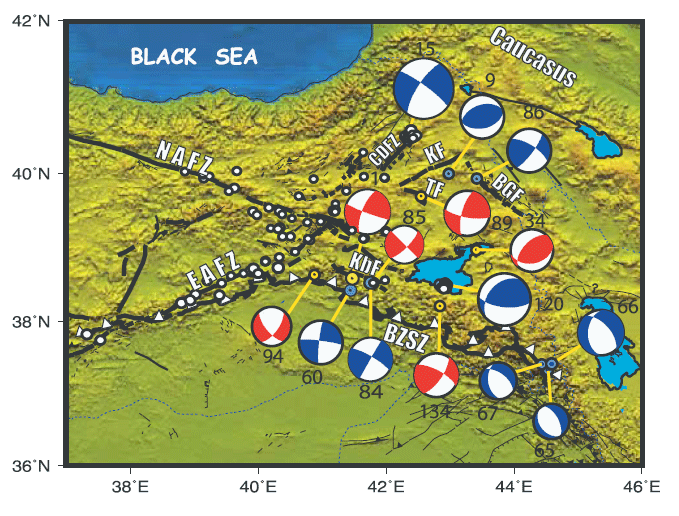
Source properties of small-to-moderate magnitude events in eastern Turkey were studied using high quality waveform data produced by the Eastern Turkey Seismic Experiment (ETSE). A data set of fault plane solutions was obtained for 134 earthquakes using the regional moment tensor inversion technique for 34 events with magnitude 3.7 and above, and first motion analysis for 115 earthquakes with magnitude 3.0 and higher (for 15 events both techniques were used). Most of the events studied had strike slip mechanisms in agreement with nearby local fault structures. Reverse mechanisms were more scarce and were restricted to certain areas, such as in the eastern Anatolian plateau and southwest of the Karliova junction along the Arabian plate boundary. Our results indicate a difference in the deformational style east and west of the Karliova junction which results in internal deformation in the east and westward extrusion of the Anatolian plate with no or very little internal deformation in the west. Our results also suggest that in eastern Turkey, most of the collision is taken up by strike slip faults of varying types and sizes, suggesting that the northward convergence of Arabia is being accommodated by escape tectonics. Compressive features, such as thrust faulting, which were obviously the primary faulting during the earliest stages of continental collision, are still active but are of lesser importance.
Click here to view a PDF of the post-print
An edited version of this paper was published by AGU. © 2003 American Geophysical Union.
Figure 3. Fault plane solutions obtained from the moment tensor inversion (blue) and first motion analysis (red), for selected events in the Eastern Anatolian Plateau and on its borders, east of Karliova. C¸ obandede Fault Zone (C¸ DFZ), Kagizman Fault (KF), Tutak Fault (TF), Balik Gölü Fault (BGF), Kavakbasi Fault (KbF). See Figure 1 for fault zone abbreviations. (lower hemisphere projection)
